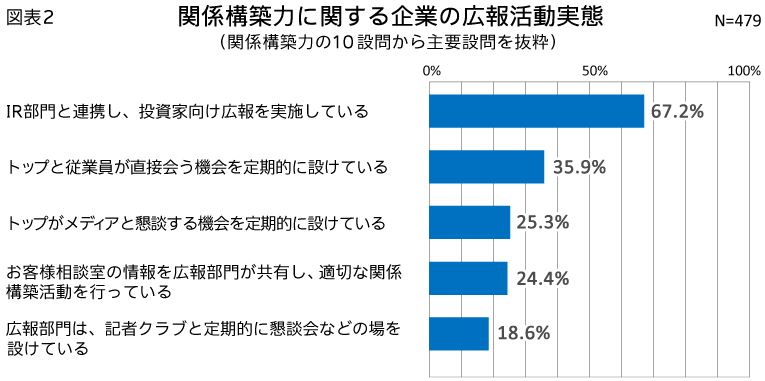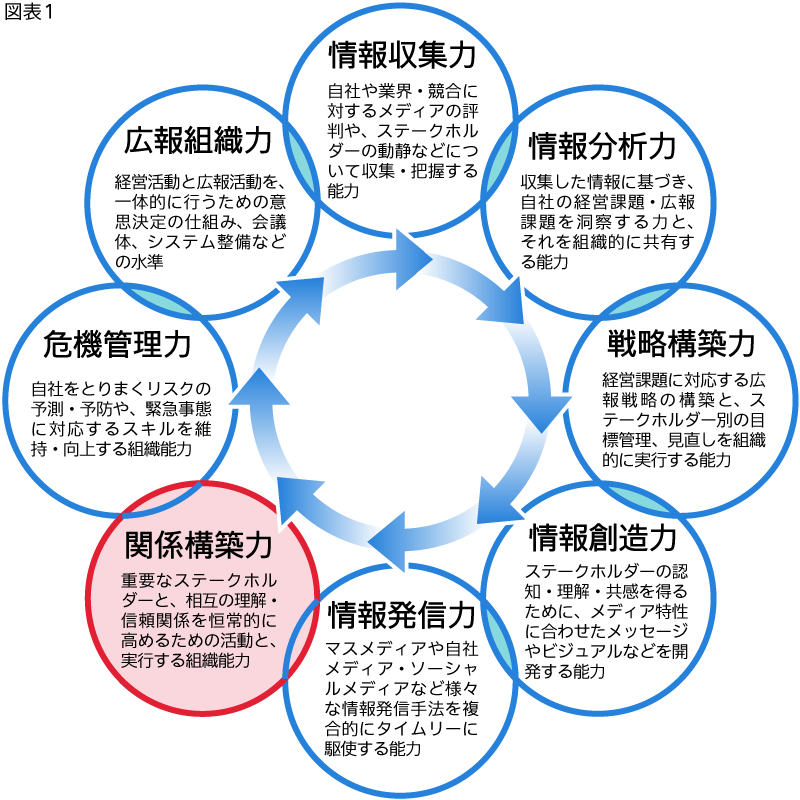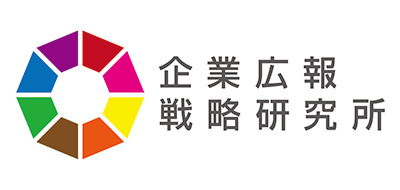The tenth installment of the " First Survey on Corporate Public Relations Activities" series focuses on the sixth element of the "Public Relations Octopus Model Analysis" – "Relationship Building Capability" – which breaks down corporate PR activities into "Eight PR Capabilities."
Eight Public Relations Capabilities
"My intentions aren't conveyed as intended," "Sometimes they lead to misunderstandings or even misinterpretations"... Many people experience the difficulty of communication. Communication in public relations activities demands even more careful and strategic handling.
Results from the " First Survey on Corporate Public Relations Activities" revealed that among the "Eight Public Relations Capabilities" shown in Figure 1, "Relationship-Building Capability" scored the lowest, indicating many companies struggle with relationship building. Scores for key questions are as follows.

*Percentage of 479 listed companies that responded affirmatively regarding relationship-building capability.
The overwhelming leader among the response items was "IR PR," with approximately 67% of companies conducting PR activities in collaboration with their IR departments. However, since the survey targets listed companies, this was expected. Instead, attention should be drawn to the fact that all other items besides IR PR scored low.
Particularly symbolic is the difficulty in describing media engagement—which should remain the PR department's top priority—as active. Scores for traditional relationship-building methods with legacy media, such as "regular meetings between top management and media" (25.3%) and "interaction with press clubs" (18.6%), are low.
One reason for these low scores may be that, amid the rise of new media players and the demands of information gathering using IT technologies like social listening, there is less time available for "relationship building."
On the other hand, the proliferation of social media has created direct communication opportunities between companies and stakeholders. Even B2B companies, which typically have limited direct dialogue with consumers and end-users, should now encounter new communication avenues. Beyond the growing need for information dissemination that is more conscious of end-users, companies must also focus on building relationships with these new communication targets.
While there are no shortcuts to relationship building, the fundamental principle remains: returning to the core value that "two-way communication is essential." As social structures grow more complex and the media environment changes daily, the scope and nature of communication targets are expanding and evolving. How we perceive these targets and how we build relationships with them is precisely where public relations capabilities are being tested now.
About the Corporate Communication Strategic Studies Institute
The Corporate Communication Strategic Studies Institute (CSI) is a research organization within Dentsu Inc. Public Relations. It collaborates with experts in corporate management and public relations (including university professors and researchers) to conduct surveys, analyses, and research on corporate communication strategies and organizational frameworks.



